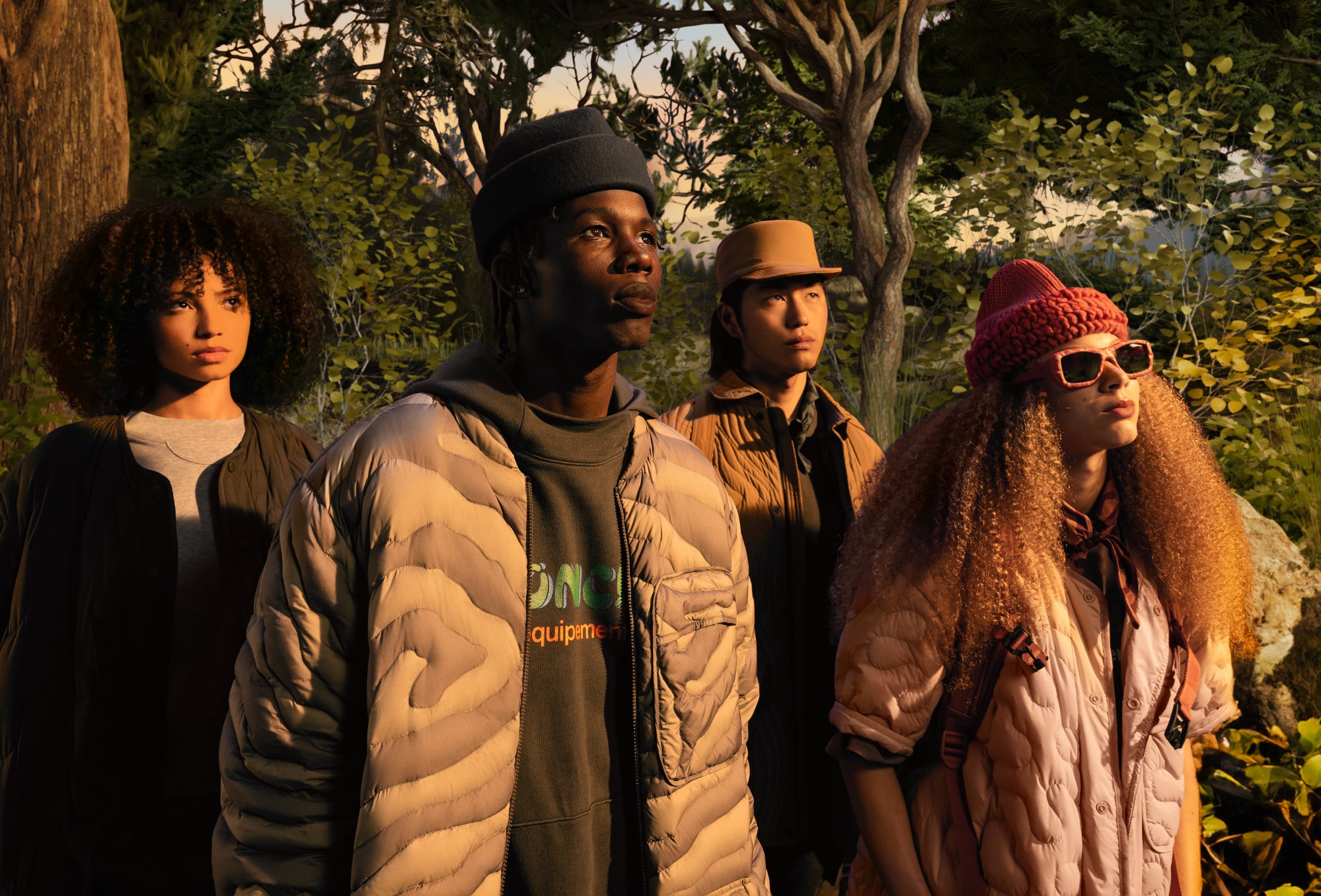If you’re a sneakerhead, then Salehe Bembury will need little introduction. For the sake of those discovering his work for the first time, though, he’s best known as one of the contemporary footwear world’s pioneering designers, earning an iron-clad reputation for his tenures leading the in-house footwear programmes at Yeezy and Versace Men’s, as well as for the myriad collaborations he’s put out under his own name. Today sees the launch of another – a collection co-created with Italian fashion behemoth Moncler, which bring together a shared proclivity for utility-driven design, a love for the great outdoors and a distinctly human perspective on luxury.
What makes this different to the projects that Salehe has previously been involved in is its scope. By far his most robust offering to date, it spans a full range of footwear, accessories and, perhaps most notably, ready-to-wear. First unveiled at Olympia London back in February as part of ‘The Art of Genius’ (Moncler’s blockbuster spectacle that filled the cavernous halls of the Kensington exhibition centre) the collection was presented in what felt like a reproduction of its native environment. There was a terracotta desertscape with a turning orb at its centre, around which models in weatherhardy parkas, sporty camo leggings, chunky knit accessories and thick-soled goretex hiking sneakers.
As ready for the elements as the collection evidently is, this isn’t your run-of-the-mill gorpcore fare. Beyond its evident practicality, there’s a playful sense of humanity that runs through it, a visual metaphor for which can be seen in the thumbprint motif seen across puffer jackets with idiosyncratic, tonal quilting, layered vests and unearthly puckered shoes with spiked rubber treads.
Ahead of today’s launch, we caught up with Salehe to discuss adapting to ready-to-wear design, his approach to humanising luxury, and how he hopes his loyal audience will respond to this new dish he’s serving.
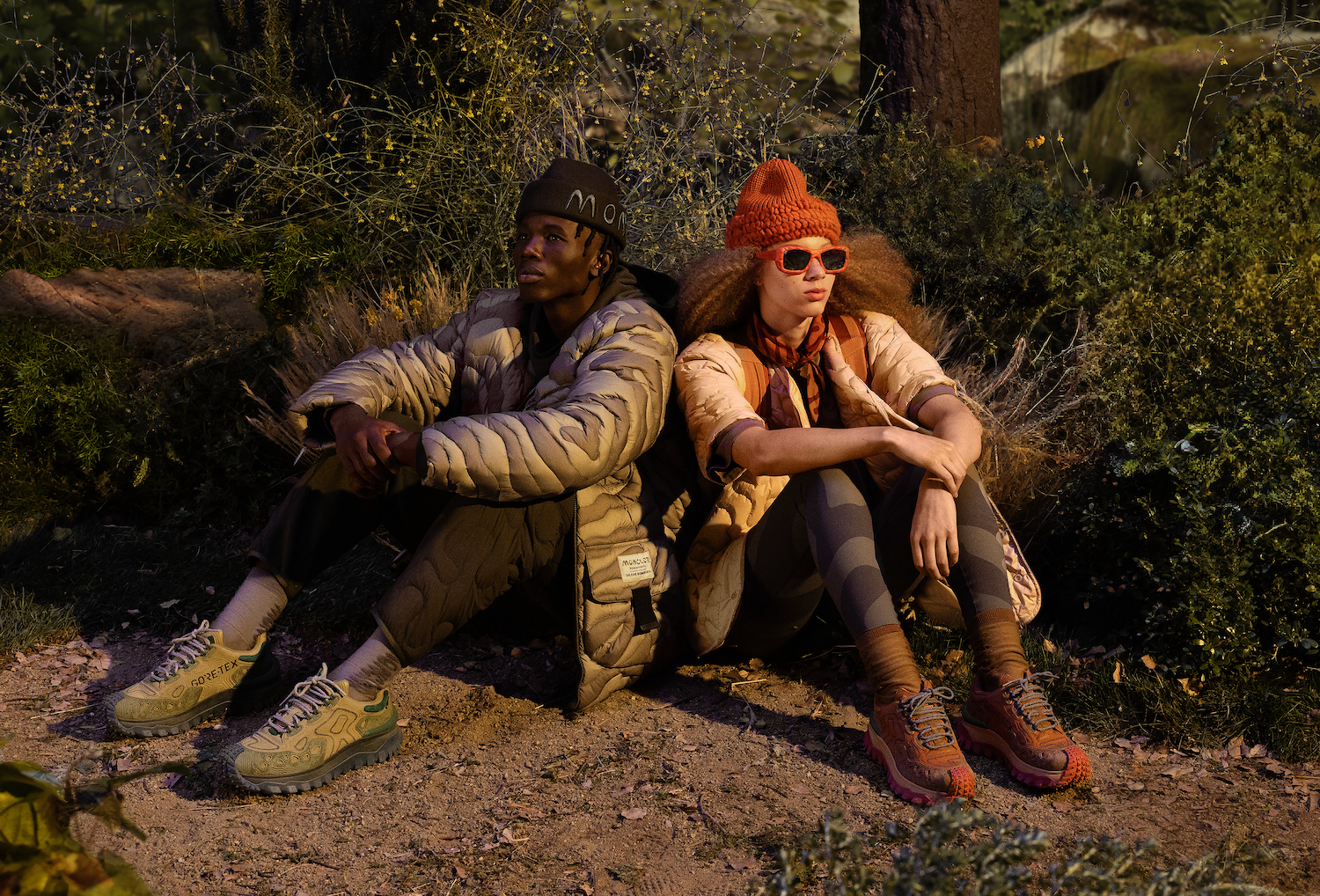
Let’s start by discussing your personal relationship with Moncler. When do you remember first coming across the brand?
There were two moments of realisation for me — one was more nostalgic, which comes from growing up in New York City. Growing up there, there were brands that held a real significance, and Moncler was one of them. It wasn’t a brand that I owned myself, and that was down to means, but it was definitely one of those brands that you would see and immediately recognise as something that you looked up to, even if you couldn’t touch it.
More recently, though, spending four years in Milan with Versace, it was a brand that I saw much more closely, and I also attended some of the previous Moncler Genius events. That’s when the relationship truly started, as not only did I become a fan of the apparel, the footwear and the execution, but I also found myself really taken in by the environments they were creating — I remember Craig Green‘s collection and installations as being especially inspiring. I was used to going to fashion shows, where you’d see the same presentational blueprint repeated. What he did almost didn’t make sense to me, but simultaneously, it felt like a really jarring, innovative way to present ideas.
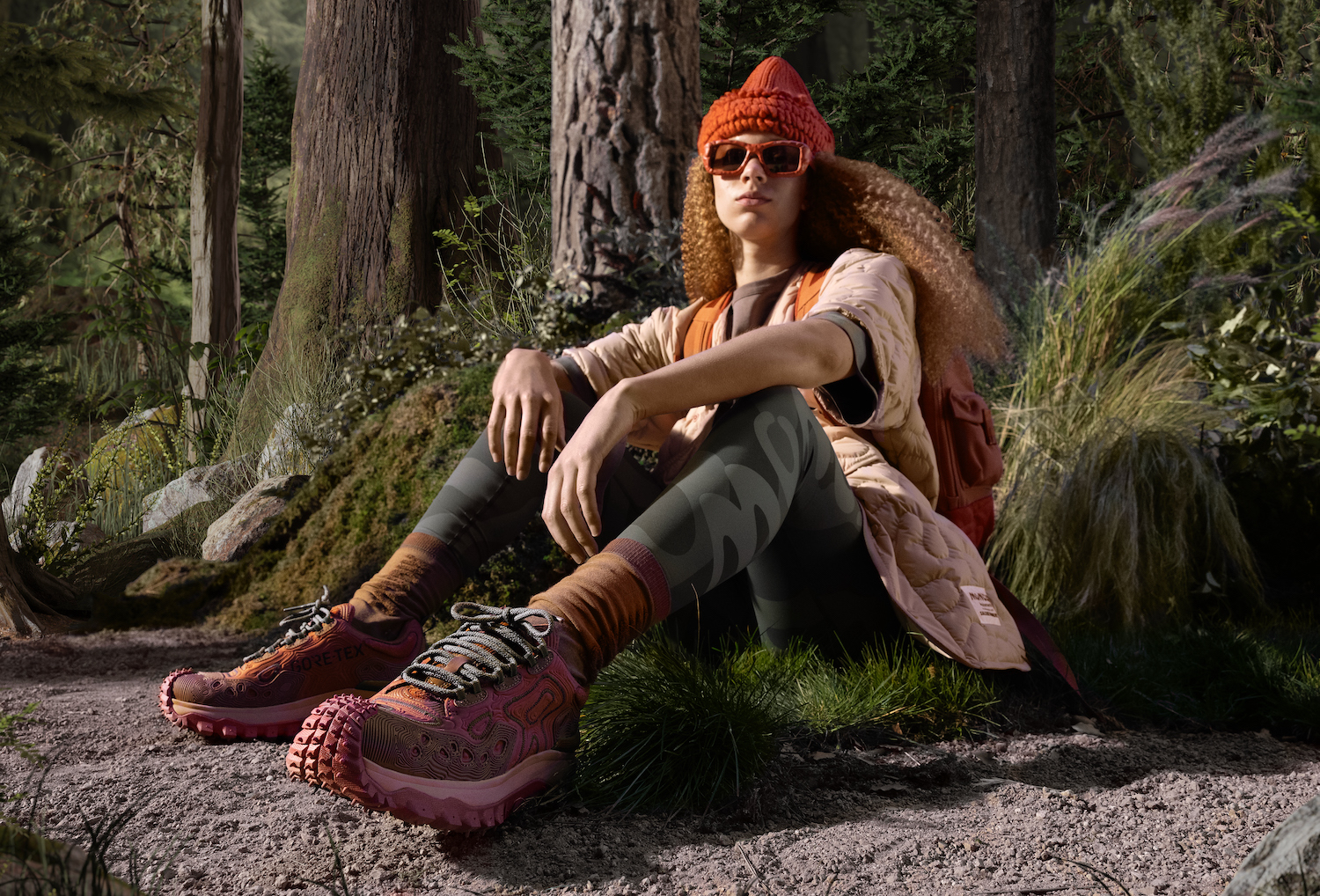
What would you say are the main shared sensibilities between Moncler and yourself?
The first thing really is utility. If you look at a lot of their apparel and what they create, it’s really about function. They’re trying to solve problems for people who spend time in the outdoors, and that really appealed to me. But also, coming into a project like this, I thought it was really important to maintain and celebrate the value of the existing codes of Moncler. I didn’t just want to come in and start throwing paint at the walls — while disruption is important in design, you still want to maintain a balance. When I first entered the building, someone told me that the main reason they were collaborating with me was that I helped humanise the brand. I thought that was really interesting. It really seemed to embody the juxtaposition of brand ethics at the heart of what we were creating: utility and a humanising of luxury.
What do you mean by ‘humanising luxury’?
Well, I come from footwear. I come from loving sneakers. I come from New York City. But I also have a specific versatility to my creativity that comes from studying industrial design. My career has taken me to many different areas of the space, including high fashion — and at first, I really felt like a spectator in these spaces. But what was interesting was that when I was in the offices of some of my friends that have streetwear companies, I’d see some of their moodboards, and they’d be filled with high fashion imagery. And then, in some of the high fashion studios I’ve been in, their moodboards would have streetwear images on them. It’s really interesting that it’s this full-circle conversation that people don’t realise they’re having. It made me realise that there are no rules, there are no walls, and it really just comes down to perspective. That’s how I’ve moved forward with my design process and perspective — and to me, that’s what the ‘humanisation of luxury’ means to me.
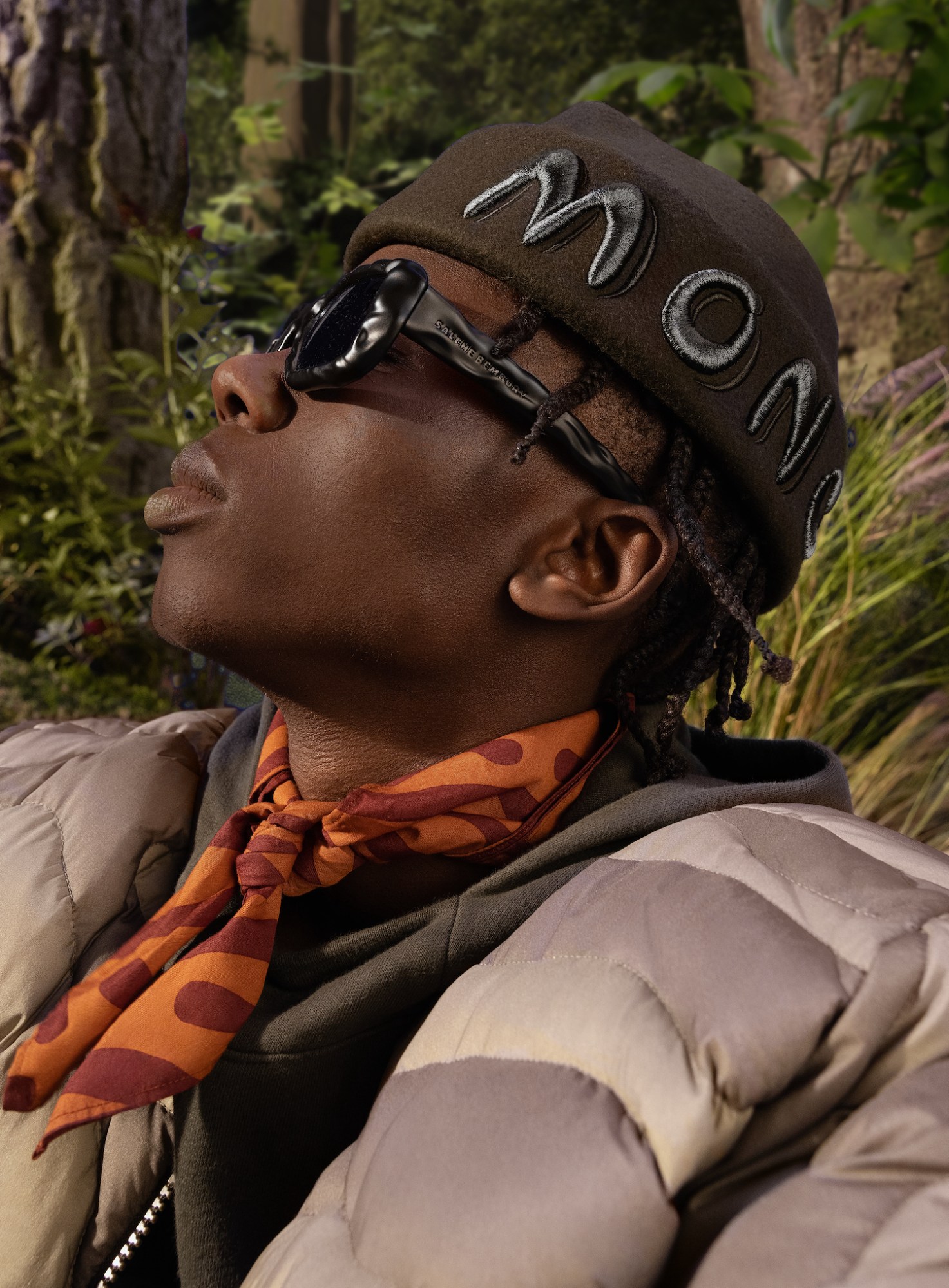
The majority of your CV has been earned in footwear; how did you find the process of pivoting to ready-to-wear?
Well, I have expertise in footwear, but my background is actually in industrial design, which covers the design of pretty much everything apart from buildings. So I’ve always had the ability to design apparel, but I’d just never done it before on such a large stage. Initially, that was a little intimidating, but it then became something that I’d conquered, and in the strangest way, it now feels like I’ve been accepted into this kind of clothing creator’s club.
What was the jumping-off point for the collection?
When I first got to Milan, I entered a room that was filled with reference samples, archive samples, models, materials, markers, scissors… and I was expected to just ‘go’, to just create. I design in solitude, with my computer, pencil and paper, so this was very new to me. I initially thought that I was going to go to Milan, get the brand codes, guidelines and deadlines, put it in my theoretical satchel, and go back to my studio — but that wasn’t the case. For the initial few hours, I was extremely uncomfortable, because that isn’t how I cook. But after a few hours, I started to see my design sensibility come through. There are stages of creative output, and with this, there was definitely some initial insecurity, followed by excitement, and then you gain that confidence, and then you reach your destination.
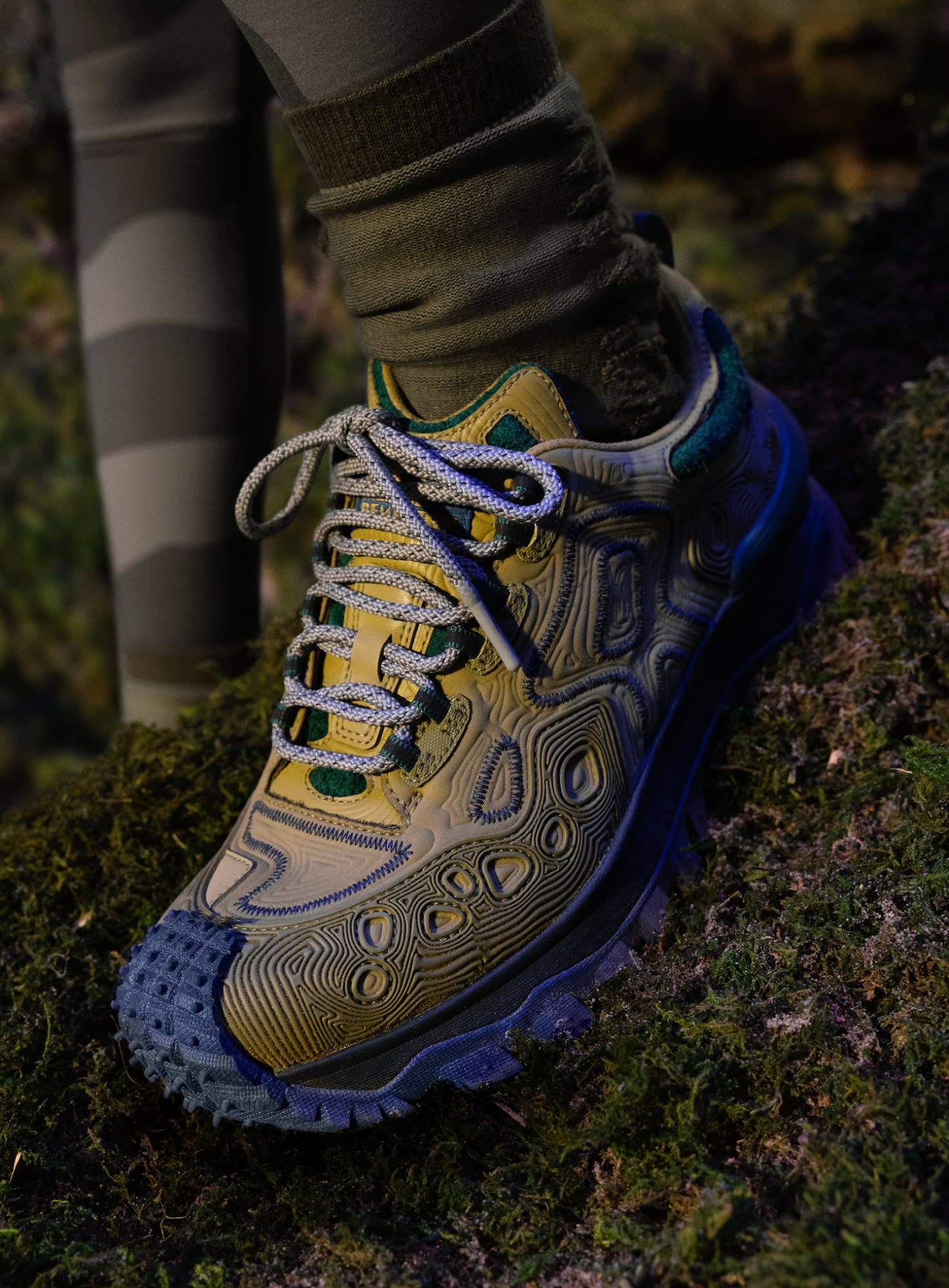
One of the collection’s hallmarks is the thumbprint motif that figures throughout. What is its significance?
All successful artists and designers have a consistent aesthetic or brand mark, and the thumbprint has been mine for the past five or so years. Not only is it a strong brand mark that I own, but it also has a very obvious relationship and sense of communication with the outdoors and the natural shapes that we find in it. It speaks to the human form, and it’s really versatile in shape and how you can play with it. I really wanted to explore that from a graphics standpoint — so you’ll see it in some two-dimensional executions — and then in some more overt executions like the puffer jacket.
Tell us more about your love for the great outdoors. How did that influence your design process?
Often, I enter a project and I feel that I have to inject the priority of the outdoors into it, even when it isn’t there initially. But given that Moncler literally and figuratively lives in that space and prioritises it, and has previously created so many silhouettes designed for outdoor wear, I didn’t have to do any handholding or introducing. It was a very harmonious collaboration in that sense. I don’t think that anything that I brought to the table was seen as left of field.
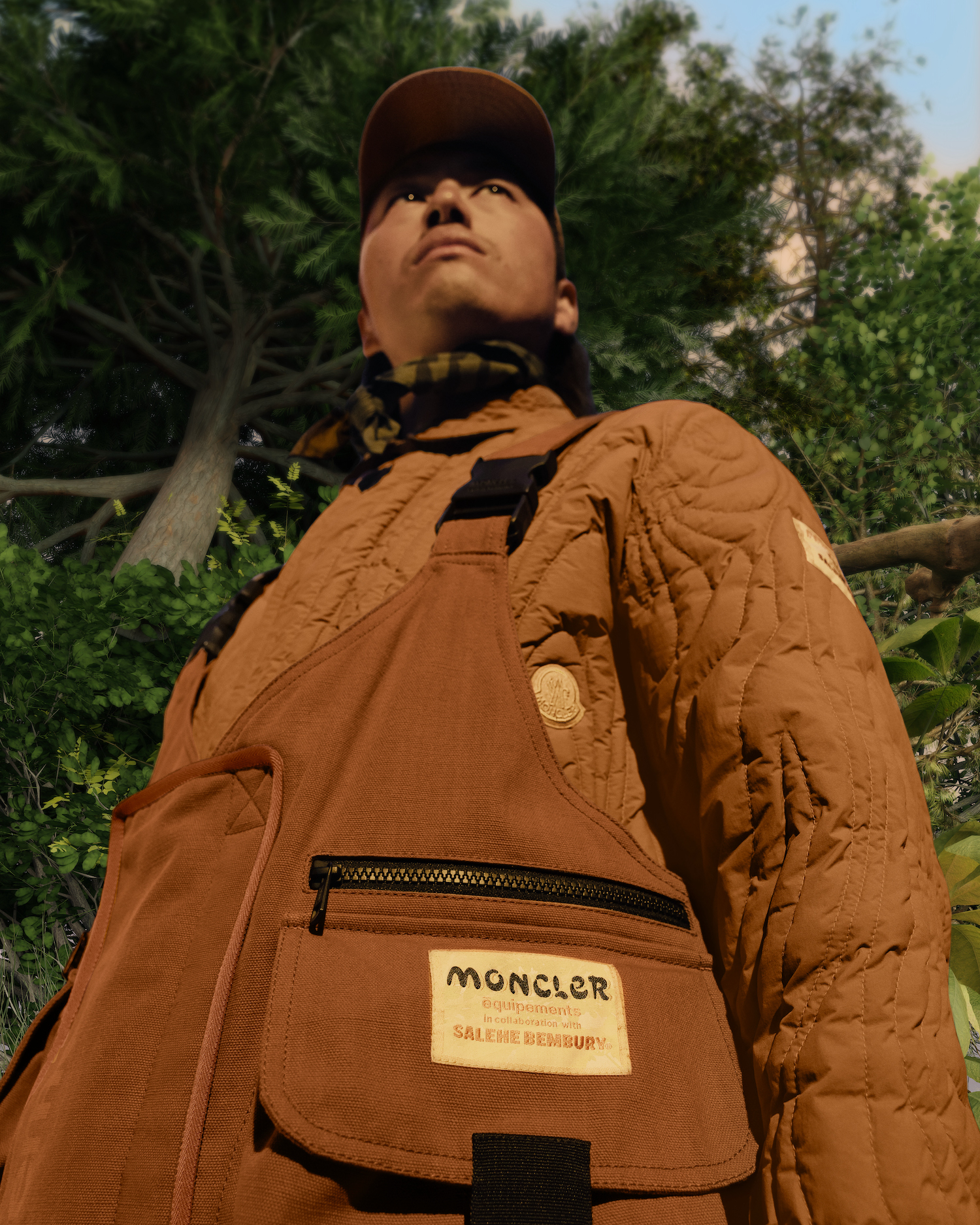
What else made working with Moncler distinct from previous collaborations you’ve been involved in?
I think the first thing was shared priorities and brand ethos, and then there was the conversation around footwear — they mentioned that they have a history of collaborating with designers that are well-versed in apparel design, but they really wanted to expand their footwear programme, and they’d never brought in a designer who was more known or their footwear. And then, Nathan VanHook, an ex Nike designer, had just started there — he’s a friend who I really admire, and someone who I really consider a sneaker design. legend, so I saw this as a great opportunity to collaborate with him as well.
How do you hope the collection will be received?
I think it’s exciting. I have an audience, and they’ve known me, mostly, for one thing. Now, I’m showing them a new dish. It has many of the same ingredients that they’re familiar with, and maybe some of the same colours that they’re used to seeing on the plate, but it’s a completely new protein. And that’s exciting. Any chef I love, if they introduced a new dish, I’d run to consume it, and I’m really hoping that this is how my audience will see it.
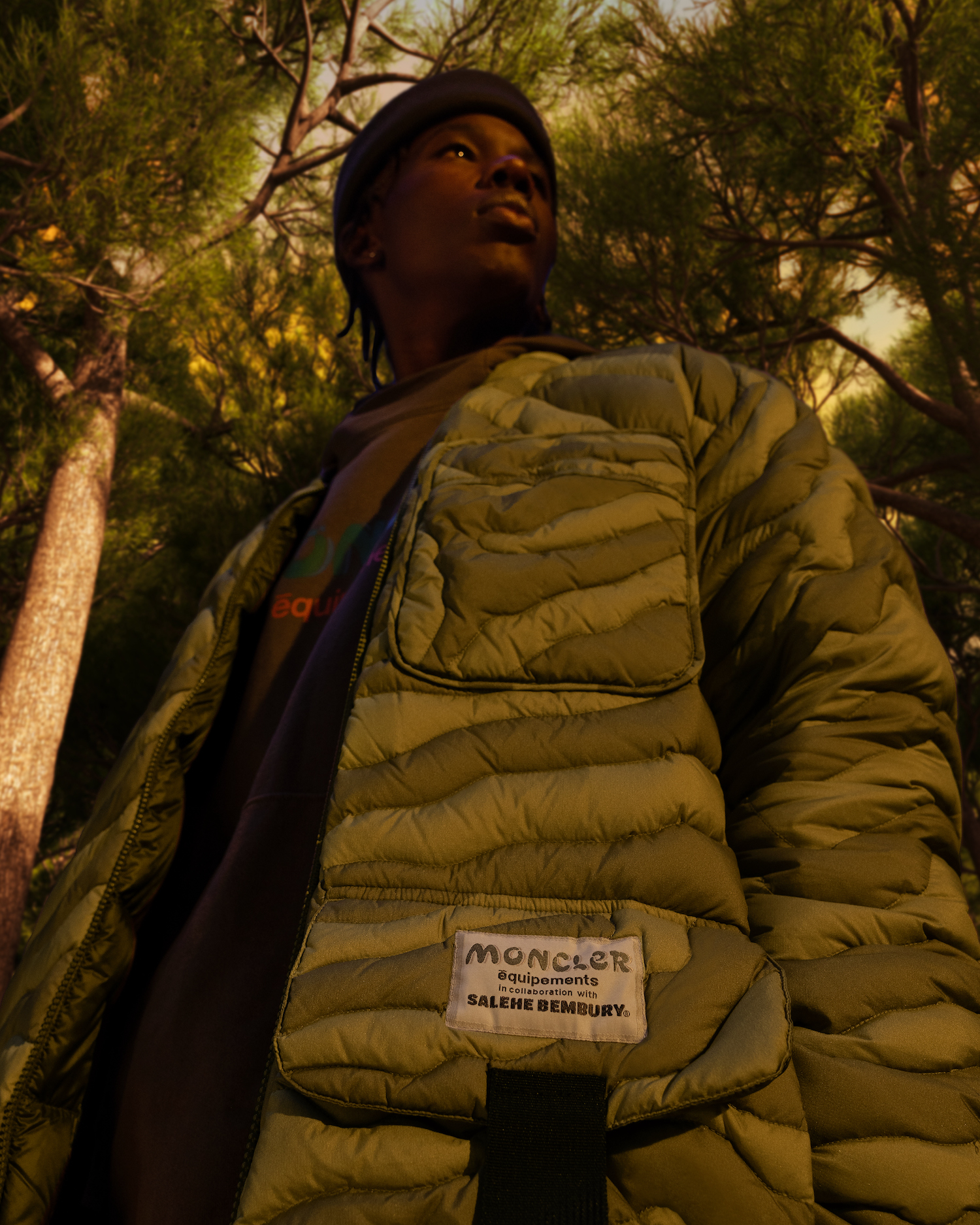
Credits
Images courtesy of Moncler
